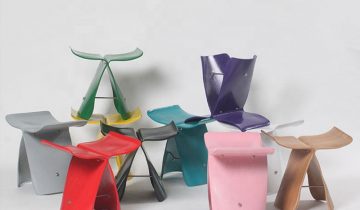Pulling a room together and transforming the features to make it functional and stylish yet homely is not often an easy task. From working out what paint works best in different rooms and lighting options to where to place furniture – there are so many elements to consider. Whether you’re redecorating your house or aspiring to be a professional interior designer, here are some suggestions and interior design essentials to help you start.
Make it Your Own

It’s important to remember that this is your house. There are no right or wrong answers when it comes to interior design; anybody can create their own home. It’s just a matter of getting an eye for it. It’s important to keep up with the latest trends, but you should always put your own unique twist on things to make them stand out. Because your house is where you spend most of your time, it must represent your personality.
Create a Mood Board

Gathering inspirational photos from magazines, Instagram, Pinterest, and other sources. This can help you transform your interiors from ordinary to revitalized. Once you’ve gathered a substantial collection, you’ll be able to envision the appearance you want to accomplish. Using your imagination to create a mood board is a terrific method to release any latent design inspiration you may have seen subconsciously.
You can start your mood board by Buying a large foam board and pins from your local art or stationary shop and collating samples, images, samples of the fabrics, wallpapers, furniture, and flooring that you might want to use. This way you can see how they would all sit together within the room.
Size Up the Furniture

Decide on the furniture you want in your room. Think about scale, in a large room you need a big sofa and footstool. Most designers recommend that even small rooms should have one large statement piece, even if it is a headboard in a bedroom. A balance of large and small pieces will create an appealing living space.
Since it can be tough to know where to begin when working with a blank canvas. Rather of getting mired down in your living room’s accessories, you can start with the sofa. It’s best to organize your layout around this important element, which is usually the largest piece of furniture in the space. Consider the light, thoroughfares, and any views you wish to take advantage of when it comes to placing. This technique can also be used in other spaces, such as the bed in a bedroom or the dining table in a living room.
Be Bold with Paint Ideas

The days of strict paint rules are over, the key to interior design in modern times is to embrace the paint idea that works for you. The color wheel is an interior design essential. It can help you to plan your color pairings or guide you out of a design rut when you’re struggling for inspiration. Use it to help you come up with complementary schemes (using colors from opposite sides of the wheel), analogous schemes (using colors next to each other on the wheel), or bolder schemes such as split complementary or triadic, which use three colors. There are no rules of painting doors frames, skirting boards, and ceilings in a brilliant white anymore.
Remember to Think About Lighting

A well-designed room can be spoiled by improper lighting, so make sure to factor lighting into your budget. Windows (for natural light), floor lamps, overhead lights, accent lighting, and white- or light-colored walls and furniture are all great ways to open up a dark or small space.
Mood lighting can instantly create the right atmosphere. Dimmer switches give you the power to use the same bulb as either general lighting or mood lighting, so installing them in every room will instantly boost the versatility of your lighting scheme. If you’re using LED lighting, make sure you choose dimmer switches that are LED-compatible so the bulbs glow brightly enough and don’t flicker. Lamps are ideal for creating a cozy glow at night, and candles, lanterns, and wall lights will all help add to your room’s overall ambiance. Also, try using LED-strip lights to highlight an alcove or under shelving to highlight your favorite features.
Add Finishing Touches

Add finishing touches for a fun bit! Lampshades, rugs, cushions, paintings, and plants can all make a huge difference but are sometimes hard to choose until you have the walls painted or papered and curtains hanging. Even the colors on the spines of books in a bookshelf, a throw on the back of the sofa, or in a kitchen ceramic, tablecloths, create opportunities for accents of color.
Sources: idealhome.co.uk, loveproperty.com, masterclass.com




 No products in the cart.
No products in the cart.